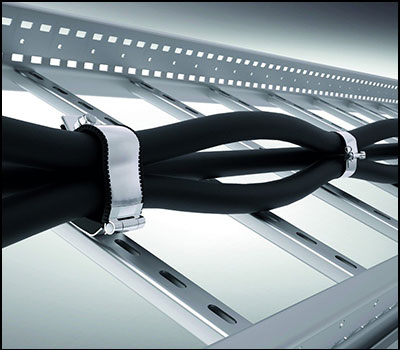The cable gland market in UK is growing at a faster pace than ever before with high spending marked every year for system installation, product development, replacement and renovation in the cabling system. Cable cleat being a vital aspect of the installation process is majorly underestimated, making it a prime means of cost cutting. This can pose a dangerous threat of capital loss and human life in the future, if treated as an electric sundry. This article gives a rundown on the importance and type of cable cleats in making a secured cable installation and the losses involved if not included in the cable management system. Furthermore, it also drives you through the detail on the significant role of testing and inspection in Cable Cleat manufacturing.
In order to get a safe cabling system, the cables should be restrained in a way that can withstand and bear the forces they generate in addition to controlling the forces generated through short circuits and environmental reactions. Making the cable management system a safer one, this is what the cable cleats are designed for. Instead of the cost incurred due to a need for a replacement or a system breakdown, short circuit, cable vibrations or due to other harmful forces, it proves to be cost effective to install cable cleats from the very first to avoid heavy damages in future conditions.
Going ahead with a further reading on this article will present the importance of cable cleat with its features & selection parameters along with a solution for making it right for the ones who have neglected to install a cable cleat or if installed it without testing the way it should be.
To find a solution, I have split the cabling system into new and old installation. For the new cabling installation to be a successful one, cable cleat is included at the design stage itself along with detail calculation on the number of cables, their types, forces exerted by cables and sensors to be inserted in the system if any. These details will clear out on knowing the parameters like the strength needed in a cable cleat, material to be used, mounting surface, physical performance required, kind of environment exposed to during installation and the type of conductor needed in the cable cleats. All these details in the design stage will help to select a perfect cable cleat suitable for the cable management system.
On the other hand, for an old installation to make it right, things would be different during cable cleat installation. The old cleat installation might not be as per the quality standard required in current times. So a proper testing of cable cleat needs to be done as a part of the investigation. If it is not found suitable and safe, it needs a suitable replacement with high version of quality and technology. This should be practiced on a regular basis to make a safe workplace and avoid the huge cost of damage to asset in future. Here, it is also recommended to consult the cabling project with an expert to make it pretty time and cost savvy. (https://www.bicccomponents.uk.com/)
Understanding the importance of cable cleat and the correct process involved in its installation is just half the story. To ensure the correct choice made in selecting the type and size of cable cleat is what completes the story making it a big hit.
The non-metallic and aluminium cable cleat are the two categories that suit in all kinds of installation environment. For rough and tough environment like heavy industrial operation, contaminated and polluted areas, epoxy coated cable cleats are a reliable choice that protects the cable from a damage or deformation. The single way cable cleats have their application in outdoor and indoor power cable types. This type of cable cleat has good resistance to ultraviolet along with the required support for the cable retention. The single way LSOH cable cleats also have similar multi features to suit all types of installation. The two bolt cable cleat is used for all kinds of LV cables. While the LSOH two bolt cable cleat is used for cleating the LV LSOH cable types. Furthermore, the Trefoil type aluminium cable cleat is installed in a wide variety of cables like LV, HV and MV cables. For all these types of cable cleat, the commonly used materials are low smoke zero halogen polymer, low density polyethylene (LLDPE), high density polypropylene and aluminium.
The crux of the article:
From the viewpoint of budgeting, the cable cleat installation will definitely increase certain amount of cost in terms of material, manpower and time. But if we count out the cost incurred on replacing the whole cable management system due to a significant damage during the short circuit conditions that can also end up in irreparable damages to the cables, it will lead to incurring a big amount of cost at large. So it is viable to go ahead with additional spending on the very first stage that can give a risk free experience in terms of healthy cabling system and security for humans.
BICC Components Limited (BICC) is one of the leading manufacturer and distributor of cable cleats, cable glands, copper terminals and other cable accessories. With an upgraded tool room for short circuit testing and other inspection methods, BICC makes it a way too easy to install cable cleats for any type of cabling project be it complex or simple. The skilled team of experts follows a well designed mechanism to calculate all the parameters and select the best suitable cable cleat design that delivers long term quality and reliability. Drop by https://www.bicccomponents.uk.com/cable-cleats/ to know about the range of cable cleats we offer. Visit https://www.bicccomponents.uk.com/contact/ to give us a call or drop a mail to solve your queries or to consult your project with one of our experts or to get a quote!
 SUBSCRIBE TO OUR BLOG
SUBSCRIBE TO OUR BLOG
